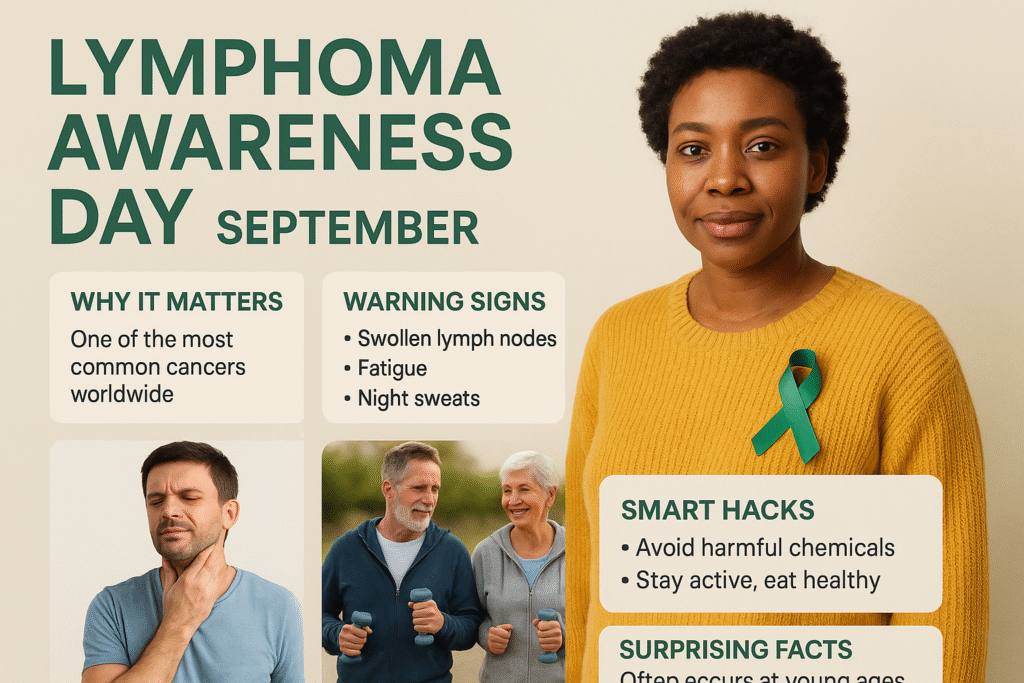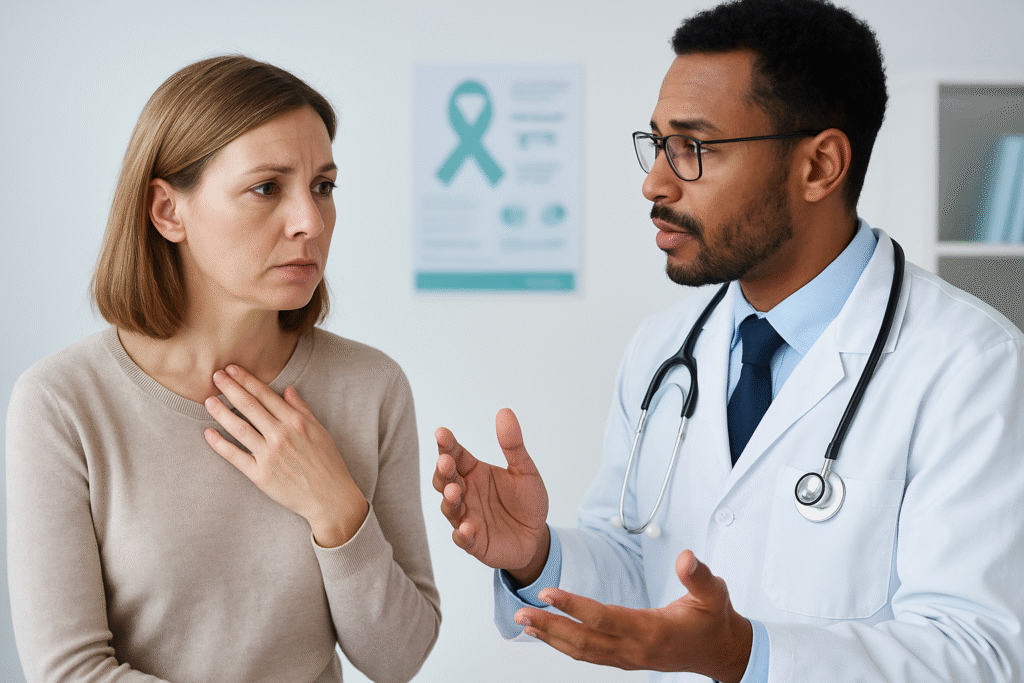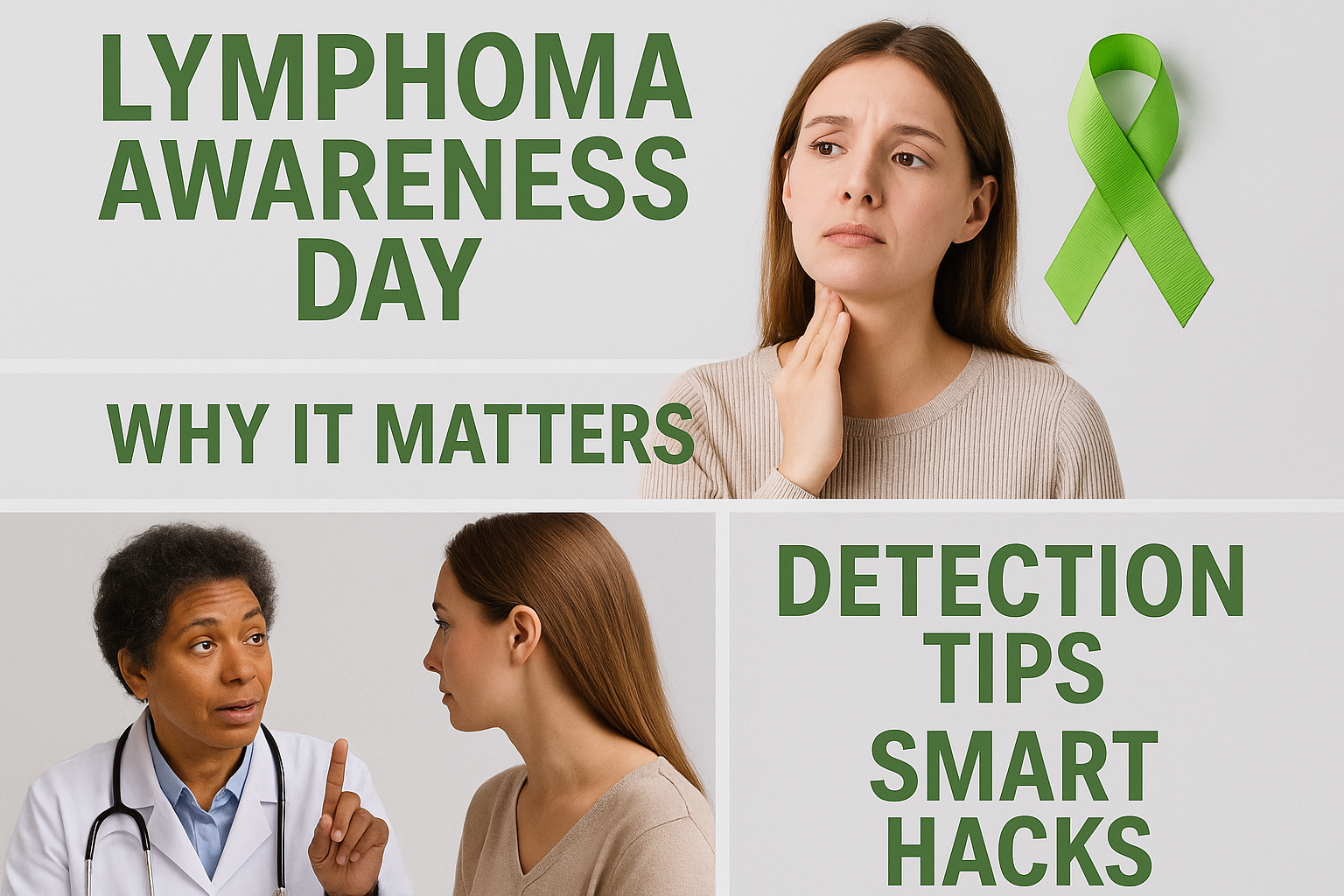Lymphoma Awareness Day—cancers that begin in the lymphatic system—are one of the most common types of blood cancer worldwide. Every year the global community marks World Lymphoma Awareness Day to raise understanding of symptoms, improve early detection, and push for better patient support and research. This guide explains why the day exists, when it’s observed, why it’s important right now , how to spot warning signs, practical prevention and “smart hacks” to protect yourself and loved ones, plus surprising facts that make this day worth noticing. All claims below are drawn from reputable, up-to-date sources.
1) What is Lymphoma Awareness Day — short answer (and why it exists)
World Lymphoma Awareness Day (WLAD) is observed each year on September 15 to focus public attention on lymphoma: its symptoms, diagnosis, treatment advances, survivorship challenges, and the emotional impacts on patients and caregivers. The day is coordinated by global and national lymphoma groups (Lymphoma Coalition, Lymphoma Research Foundation, and others) to centralize education campaigns and push for better access to care worldwide. The core idea: earlier awareness → earlier presentations to clinicians → earlier diagnosis → better outcomes.
2) When is it celebrated — calendar clarity
Mark your calendar: September 15 is the internationally recognized date for World Lymphoma Awareness Day each year. Organizations run patient panels, local screenings, social campaigns, and share resources and survivor stories around that date. If you or your group want to run events, plan them for the two surrounding weeks to maximize participation.
3) Why this matters in September 2025 — the current context
Cancer trends and resources are changing rapidly. For 2025, reputable cancer registries and organizations report that lymphoma (both Hodgkin and non-Hodgkin types) continues to be a substantial public-health concern:
- The American Cancer Society projects tens of thousands of new lymphoma diagnoses in the U.S. in 2025, with non-Hodgkin lymphoma accounting for the bulk of cases.
- Global campaigns in recent years have emphasized mental-health support and “honest conversations” between patients and clinicians—an important shift from purely clinical messaging to whole-person care.
Put plainly: treatments are better than decades ago, but incidence remains high and survivors face ongoing physical and emotional challenges. That makes awareness and access to care still critical in 2025.

4) What lymphoma is — the basics (Hodgkin vs. non-Hodgkin)
Lymphoma starts in lymphocytes, a type of white blood cell. There are two broad groups:
- Hodgkin lymphoma (HL): rarer, often more treatable, common in younger adults and older adults.
- Non-Hodgkin lymphoma (NHL): many subtypes, more common, and accounts for most lymphoma cases.
Treatment and prognosis depend on subtype, stage, age, and patient health. For practical decisions, clinicians use biopsy, imaging, and laboratory staging to design a treatment plan (chemotherapy, targeted therapy, immunotherapy, radiation, or combinations).
5) Symptoms to watch for — early detection checklist
Lymphoma symptoms can be subtle. If you notice any of the following persisting for 2–3 weeks, talk to your primary care clinician:
- Painless swelling of lymph nodes (neck, armpit, or groin)
- Unexplained fever or repeated fevers
- Night sweats that soak clothing or sheets
- Unintentional weight loss (several pounds over months)
- Persistent fatigue or low energy
- Persistent cough, chest pain, or difficulty breathing (if lymph nodes in chest press on airways)
- Abdominal pain or feeling of fullness (if lymph nodes in abdomen are enlarged)
These are general red flags—not a diagnosis. Only a clinician can arrange the tests (blood work, imaging, biopsy) that confirm or rule out lymphoma.
6) Prevention — realistic ways to lower risk (what evidence supports)
There’s no guaranteed way to prevent most lymphomas. Still, public-health strategies can reduce risk factors and improve outcomes:
- Limit known exposures: Certain infections (e.g., untreated HIV or EBV in specific contexts) and environmental exposures can increase lymphoma risk; managing infections and occupational safeguards matter.
- Vaccination and infection control: In settings where vaccine-preventable infections contribute to cancer risk, vaccination helps indirectly.
- Healthy lifestyle: Maintain a balanced diet, avoid tobacco, limit excessive alcohol, and control obesity—these reduce overall cancer risk even if evidence specific to lymphoma varies.
- Healthcare access: Regular primary-care visits improve chances that early signs are noticed and referred promptly.
Prevention remains an area of active research; talk to your doctor about individual risk factors and screening appropriate for your situation.

7) Smart hacks — practical steps to safeguard yourself and loved ones
These are low-friction, high-impact actions you can do this month:
- Symptom log template: Keep a one-page log (date, symptom, severity, what made it better/worse). Bring this to your doctor — it speeds up diagnostic thinking.
- Know your family history: Write down cancers in immediate family and ages at diagnosis; that helps clinicians assess hereditary risk.
- Annual check-ins: If you had an immune-compromising illness or long immune suppression, schedule annual bloodwork and physical checks.
- Ask for explanations: If you’re sent for imaging or biopsy, ask “What are you looking for?” and “When will I get results?” Delays can create anxiety; clearer timelines help.
- Leverage community resources: On World Lymphoma Awareness Day many organizations publish conversation starters, local support group listings, and financial assistance resources—download them and bookmark key phone numbers.
8) Little-known and exciting facts
- Survivorship is growing. Advances in targeted therapies and immunotherapies have substantially improved survival for many lymphoma subtypes in the past decade.
- Young adults are affected. Lymphoma isn’t just a disease of older adults; a measurable share of diagnoses occurs in people under 40, making awareness in younger populations important.
- Support matters: Recent global surveys show a large proportion of people with lymphoma report emotional impacts such as anxiety and fear of recurrence—highlighting that mental-health services are as important as medical treatment.
9) How you can participate on Lymphoma Awareness Day
- Share accurate educational posts (use Lymphoma Coalition or Lymphoma Research Foundation materials).
- Host or join a local community forum (virtual panels work great).
- Encourage your workplace to publish quick facts and a short checklist in internal comms.
- If you’re a survivor, consider telling your story—real narratives help others recognize symptoms earlier.
Should you see a doctor?
- Have you noticed painless swelling of a lymph node for >2 weeks? → See your doctor.
- Unexplained fever, night sweats, or weight loss? → See your doctor.
- Persistent cough or chest fullness? → Urgent evaluation.
Sources & Verified Links
(The list below contains only valid, authoritative pages used to compile this article.)
- World Lymphoma Awareness Day — Lymphoma Coalition (overview, campaign resources). (lymphomacoalition.org)
https://lymphomacoalition.org/world-lymphoma-awareness-day/ - Lymphoma Research Foundation — World Lymphoma Awareness Day resources & events. (Lymphoma Research Foundation)
https://lymphoma.org/event/world-lymphoma-awareness-day-2/2025-09-15/ - American Cancer Society — Cancer Facts & Figures 2025 (stats for Hodgkin & non-Hodgkin lymphoma). (American Cancer Society)
https://www.cancer.org/content/dam/cancer-org/research/cancer-facts-and-statistics/annual-cancer-facts-and-figures/2025/2025-cancer-facts-and-figures-acs.pdf - SEER / National Cancer Institute — Non-Hodgkin lymphoma stat facts. (SEER)
https://seer.cancer.gov/statfacts/html/nhl.html - LLS (Leukemia & Lymphoma Society) — Facts and statistics on blood cancers. (lls.org)
https://lls.org/facts-and-statistics
Disclaimer (AdSense-friendly)
This article is for general informational purposes only and reflects data and guidance available as of September 2025. It is not medical advice. If you have health concerns or suspect you may have symptoms described here, consult a licensed healthcare professional promptly. TrenBuzz.com is not responsible for changes in guidance or new research published after this date. Images used in this article are royalty‑free or licensed for commercial use and are provided here for illustrative purposes.
